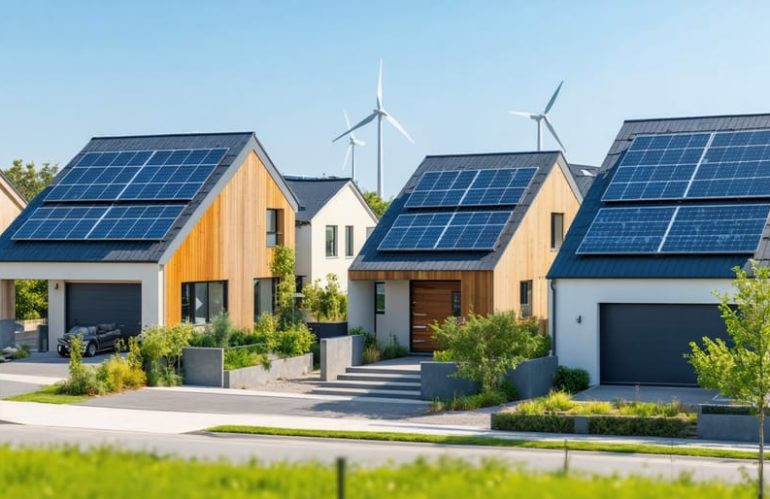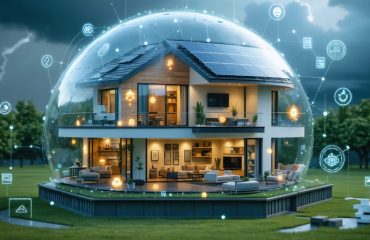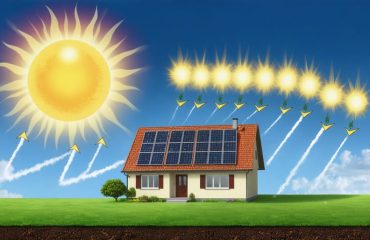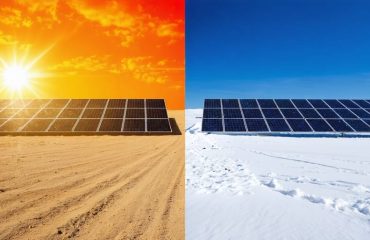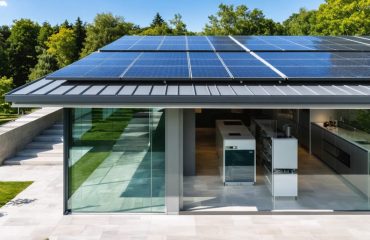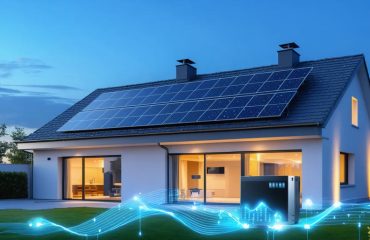Solar energy stands at the forefront of our transition to sustainable power, fundamentally reshaping our relationship with the environment. As homeowners increasingly turn to solar panels for clean energy solutions, understanding their environmental impact has never been more crucial. From reducing greenhouse gas emissions to minimizing water consumption in power generation, solar technology offers a promising path toward a greener future. Yet, like any energy source, solar power’s environmental footprint extends beyond its clean electricity production – from manufacturing processes to end-of-life disposal considerations.
This comprehensive exploration reveals how solar energy affects our ecosystems, climate, and natural resources, while addressing both the immediate benefits and long-term environmental considerations that homeowners should understand. By examining the full lifecycle impact of solar technology, we can better appreciate its role in creating a sustainable energy landscape and make informed decisions about our energy choices.
The Environmental Benefits of Solar Power
Reduced Carbon Emissions
Solar panels play a crucial role in helping save the planet by significantly reducing household carbon emissions. When you install solar panels on your home, you’re directly decreasing your reliance on fossil fuels for electricity generation. A typical residential solar system can prevent between 3-4 metric tons of carbon emissions annually – equivalent to planting over 100 trees.
This reduction happens because solar energy produces electricity without burning fossil fuels or releasing greenhouse gases into the atmosphere. Instead, it harnesses clean, renewable energy from the sun. For perspective, a 6kW solar system can offset the same amount of carbon emissions as taking a car off the road for an entire year.
The environmental impact becomes even more significant when considering the lifecycle of solar panels. While there is some carbon footprint associated with manufacturing and installation, solar panels typically offset these emissions within the first two to three years of operation. After that, they continue providing clean energy for decades, making them one of the most effective ways for homeowners to reduce their environmental impact.
Decreased Air Pollution
One of the most significant benefits of solar energy is its role in reducing air pollution. Unlike traditional fossil fuel power plants, solar panels generate electricity without emitting harmful pollutants into the atmosphere. This clean energy production means fewer particulate matter, nitrogen oxides, and sulfur dioxide – pollutants that can trigger respiratory problems and contribute to smog formation.
By switching to solar power, a typical home can prevent the emission of 3-4 tons of carbon dioxide annually, equivalent to planting over 100 trees. This reduction in air pollutants has direct benefits for public health, particularly in urban areas where air quality is often compromised. Communities with higher solar adoption rates generally experience better air quality, leading to decreased rates of respiratory illnesses and related health issues.
The impact becomes even more significant when multiple households in a neighborhood adopt solar energy. As more homes switch to solar power, the cumulative effect creates cleaner air for entire communities, resulting in healthier living environments and reduced healthcare costs associated with air pollution-related illnesses.
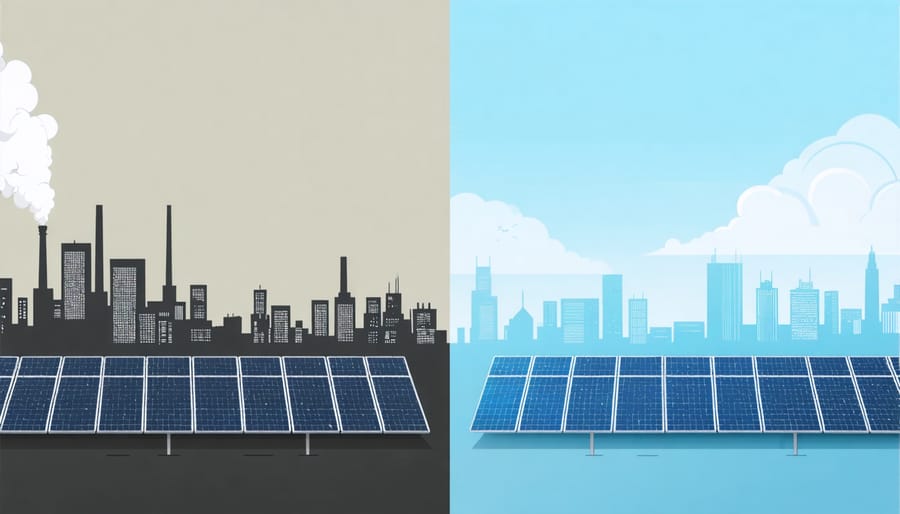
Water Conservation Success
One of solar energy’s most significant environmental benefits is its minimal water consumption compared to traditional power generation methods. While conventional power plants require massive amounts of water for cooling and steam generation, solar panels operate without using any water in their electricity production process.
Traditional coal and nuclear power plants typically use between 20,000 to 60,000 gallons of water per megawatt-hour of electricity generated. This water is mainly used for cooling systems and creating steam to turn turbines. In contrast, solar photovoltaic systems require only a small amount of water for occasional cleaning, averaging about 20 gallons per megawatt-hour – less than 1% of what traditional power plants use.
This water conservation aspect becomes particularly important in drought-prone areas and regions where water resources are scarce. By switching to solar power, communities can significantly reduce their water footprint while maintaining reliable energy production. For example, a typical home solar installation that generates 10,000 kilowatt-hours annually could save approximately 3,000-4,000 gallons of water that would have been used in conventional power generation.
The water savings extend beyond just quantity. Solar power also helps preserve water quality by eliminating the thermal pollution that occurs when power plants release heated water back into natural water bodies. This protection of water resources makes solar energy an environmentally responsible choice for homeowners who want to reduce their overall environmental impact while contributing to sustainable water management practices.
Land Use and Habitat Considerations
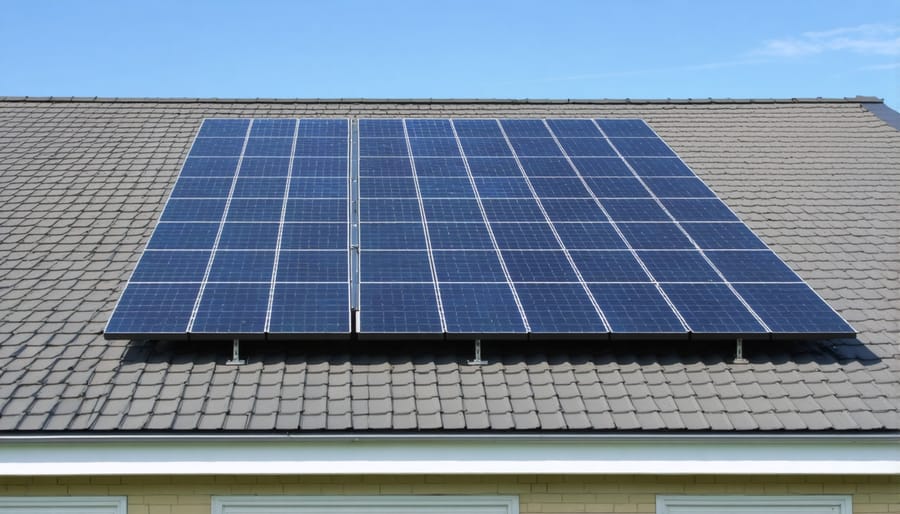
Rooftop Solutions
Rooftop solar installations offer a brilliant solution for maximizing existing space while minimizing environmental impact. By utilizing your roof’s unused surface area, you’re making the most efficient use of your property without requiring additional land clearance or habitat disruption. This approach is particularly effective for creating a high-performance solar home system that seamlessly integrates with your existing structure.
Most residential rooftops provide ideal elevation for optimal sun exposure, naturally avoiding shade from trees and neighboring buildings. This elevation also helps keep panels clear of debris and reduces the risk of vandalism or damage. Additionally, roof-mounted systems often benefit from existing infrastructure, requiring minimal additional construction or ground disturbance.
The dual-purpose nature of rooftop installations means your roof not only protects your home but also generates clean energy, making it an environmentally conscious choice that preserves natural spaces while reducing your carbon footprint.
Wildlife-Friendly Installation
Installing solar panels can be done in ways that protect and preserve local wildlife. Strategic panel placement, such as avoiding known animal pathways and nesting areas, helps minimize disruption to natural habitats. Implementing wildlife-friendly fencing with adequate gaps allows small animals to move freely beneath the installation, while proper spacing between panels creates corridors for wildlife movement.
Some installers now use anti-reflective coatings on panels to reduce bird confusion and prevent collisions. Native plant landscaping around the installation supports local pollinators and provides natural habitats. Regular maintenance checks should include monitoring for nesting animals and adjusting schedules to avoid disturbing wildlife during breeding seasons.
For ground-mounted systems, raising panels higher off the ground creates shelter for small animals and allows vegetation to grow underneath. This approach transforms solar installations into dual-purpose spaces that generate clean energy while supporting local ecosystems.
Solar Panel Lifecycle and Recycling
Solar panels are designed to provide clean energy for 25-30 years, but understanding their complete lifecycle is crucial for evaluating their environmental impact. The manufacturing process does require energy and raw materials, primarily silicon, glass, and metal components. However, most solar panels pay back their energy manufacturing costs within 2-4 years of operation, meaning they produce clean energy for the majority of their lifespan.
During their operational years, solar panels require minimal maintenance while consistently generating clean electricity. Regular cleaning and occasional inspections are typically all that’s needed to maintain optimal performance. This low-maintenance nature contributes to their overall environmental benefits, as they don’t require frequent replacement parts or resource-intensive upkeep.
As solar panels reach the end of their useful life, recycling becomes an important consideration. The good news is that approximately 95% of solar panel materials can be recycled and repurposed. The glass, aluminum frame, and various metal components are particularly valuable and easily recyclable. While the recycling infrastructure for solar panels is still developing in many regions, numerous companies and organizations are investing in advanced recycling technologies.
Many manufacturers now implement “circular economy” principles in their production processes, designing panels with recycling in mind. This approach includes using fewer toxic materials and making components easier to separate and recycle. Some companies even offer take-back programs, ensuring their products are properly recycled at the end of their life cycle.
The solar industry continues to improve panel efficiency and manufacturing processes, reducing the environmental impact of production while increasing the lifespan and recyclability of panels. This ongoing innovation means that newer solar panels have an even better environmental profile than their predecessors, making solar energy an increasingly sustainable choice for homeowners.
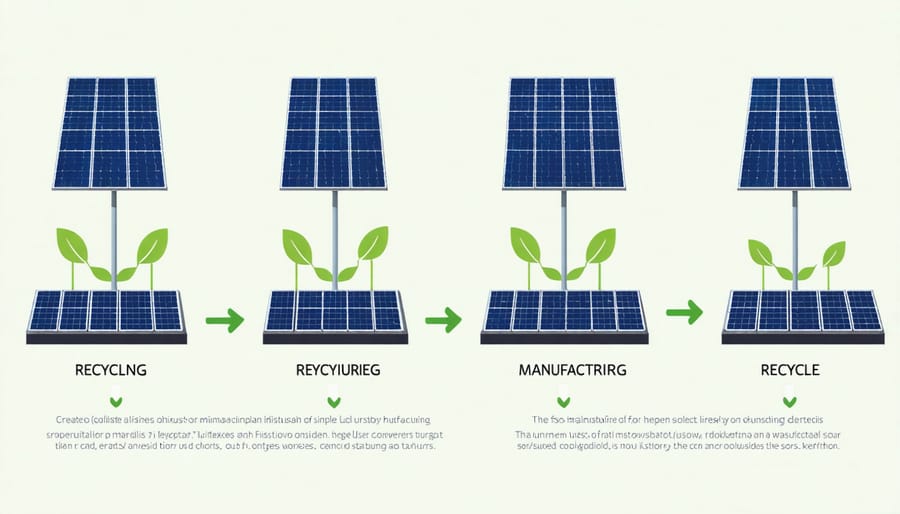
Building Energy Resilience
Solar power plays a crucial role in building energy resilience within communities. By generating electricity locally, solar installations reduce dependence on centralized power plants and create a more distributed energy network. This decentralized approach helps communities better withstand power outages and recover more quickly from natural disasters.
When homeowners install solar panels, they contribute to grid stability by reducing peak demand during high-usage periods. This is particularly valuable during summer months when air conditioning use strains the power grid. Solar systems with battery storage offer even greater independence, allowing homes to maintain power during outages and share excess energy with neighbors when needed.
The growth of solar adoption also strengthens local economies by creating jobs in installation, maintenance, and related services. As more homes and businesses embrace solar power, communities become more self-sufficient and less vulnerable to energy price fluctuations. This transition to renewable energy not only benefits the environment but also builds stronger, more resilient neighborhoods ready to face future energy challenges.
Solar energy stands as a beacon of hope for a cleaner, more sustainable future. By harnessing the sun’s power, we can significantly reduce greenhouse gas emissions, minimize air and water pollution, and preserve our natural resources for generations to come. The environmental benefits are clear: reduced carbon footprint, minimal land impact when installed on existing structures, and virtually no noise pollution. As homeowners, we have the power to make a real difference. By switching to solar energy, you’re not just cutting your energy bills – you’re contributing to a healthier planet. The time to act is now. Consider making the switch to solar power and join the growing community of environmentally conscious homeowners who are leading the charge toward a more sustainable future. Your decision today can help create a cleaner tomorrow for everyone.

